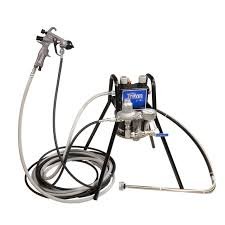SOP for Cleaning of Pressure Vessel, Peristaltic Pump and Spraying Gun

Standard Operating Procedure (SOP)
Here is a comprehensive SOP that covers the cleaning of Pressure Vessel, Peristaltic Pump, and Spraying Gun, typically used in pharmaceutical, biotech, or sterile manufacturing environments.
1. Objective
To establish a standardized procedure for cleaning the Pressure Vessel, Peristaltic Pump, and Spraying Gun to ensure removal of residues, maintain hygiene, and prevent cross-contamination.
2. Scope
This procedure applies to all units of Pressure Vessels, Peristaltic Pumps, and Spraying Guns used in manufacturing or sterile operations.
3. Responsibility
-
Operators / Technicians: Execute the cleaning as per this SOP.
-
Production/Engineering Supervisor: Supervise and verify cleaning activities.
-
QA Personnel: Inspect and approve the cleanliness as per GMP requirements.
4. Materials and Equipment Required
-
Purified Water / WFI (as applicable)

Approved non-toxic cleaning detergent
-
Nylon brushes / pipe brushes
-
Lint-free cloths
-
Compressed air (filtered, oil-free)
-
PPE (gloves, gown, mask, goggles)
-
Cleaning Logbook
5. Procedure
5.1 Cleaning of Pressure Vessel
-
Ensure the vessel is disconnected and depressurized before starting.
-
Wear proper PPE.
-
Drain any residual product and rinse the vessel with purified water.
-
Wash the inner surface using a cleaning solution and a brush or CIP system.
-
Pay attention to weld joints, valves, and manhole seals.
-
Rinse thoroughly with purified water or WFI until no detergent residue remains.
-
Wipe external surfaces with a damp cloth.
-
Dry using lint-free cloth and/or compressed air.
-
Visually inspect and log the cleaning activity.
5.2 Cleaning of Peristaltic Pump
-
Switch off and unplug the pump.
-
Remove and dispose of used tubing per waste procedures.
-
Clean the pump rollers, head, and housing with a damp cloth soaked in detergent solution.

-
Use a soft brush if required to remove residues from crevices.
-
Rinse using purified water (damp cloth or controlled stream).
-
Wipe dry and inspect for cleanliness.
-
Reinstall new or sterilized tubing if ready for next use.
-
Record the cleaning.
5.3 Cleaning of Spraying Gun
-
Disconnect the spraying gun from pressure line or liquid source.
-
Dismantle the spray gun nozzle, pipe, and attachments as per SOP.
-
Rinse with purified water to remove product traces.
-
 Soak removable parts in approved cleaning solution.
Soak removable parts in approved cleaning solution. -
Use brushes to scrub nozzle, trigger mechanism, and spray head.
-
Rinse thoroughly with purified water or WFI.
-
Dry using filtered compressed air.
-
Reassemble and check for proper function.
-
Record cleaning details in the logbook.
6. Post-Cleaning Activities
-
Affix “Cleaned” status labels with date, time, and initials.
-
Document all cleaning activities in the Equipment Cleaning Log.
-
Submit for QA inspection and clearance as required.
7. Precautions
-
Avoid excessive moisture near electrical components.
-
Use appropriate tools to dismantle equipment.
-
Do not use harsh or abrasive cleaning agents.
-
Ensure full removal of cleaning agents to prevent contamination.
🎓 Discover one of the best Pharmaceutical Production courses available — click below to explore the course that’s shaping future Production skills.

